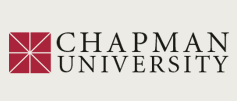Document Type
Article
Publication Date
6-13-2025
Abstract
Protein Arginine Methyltransferase 7 (PRMT7) is the only member of the protein arginine methyltransferase protein family that monomethylates its protein substrates. PRMT7 is found in both the nucleus and cytoplasm of breast cells and is believed to play a robust role in the tumorigenesis and metastasis of breast cancer. The goal of this project is to uncover possible pathways for PRMT7 to promote cancer progression. A preliminary antibody array was performed to determine the regulation of known cancer-related proteins by PRMT7. An early-stage human breast cancer cell line, MCF-7, was transfected with plasmid pCDH1-hPRMT7-GFP to over-express PRMT7. Qualitative and quantitative analysis of detectable expression changes compared to sham transfection revealed a decrease in p53 expression, a protein not previously associated with PRMT7. Upon DNA damage, p53 can induce the expression of genes like p21, which inhibit cyclin-dependent kinases (CDKs) and halt the cell cycle. This pause allows the cell time to repair the DNA damage before proceeding with division. Our current research aims at identifying the mechanisms of action by which PRMT7 regulates p53. For example, PRMT7 may monomethylate proteins directly implicated in the expression or activity of p53. Successful completion of this project will provide novel insights into how PRMT7 contributes to breast cancer progression.
Recommended Citation
Niswender, M., Hughes, E., Pessi, L., Lopez, C., Bisoffi, M., 2025. Abstract 2853 PRMT7 Negatively Regulates the Expression p53 in Response to DNA Damage. Journal of Biological Chemistry 301. https://doi.org/10.1016/j.jbc.2025.108752
Copyright
The American Society for Biochemistry and Molecular Biology, Inc.
Creative Commons License

This work is licensed under a Creative Commons Attribution 4.0 License.
Included in
Amino Acids, Peptides, and Proteins Commons, Cancer Biology Commons, Cell Anatomy Commons, Cell Biology Commons

Comments
Originally published in Journal of Biological Chemistry, volume 301, issue 5, supplement, in 2025. https://doi.org/10.1016/j.jbc.2025.108752